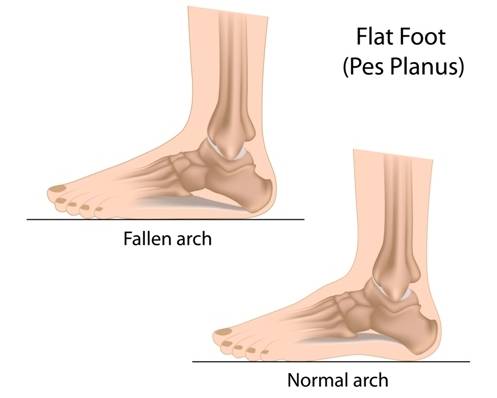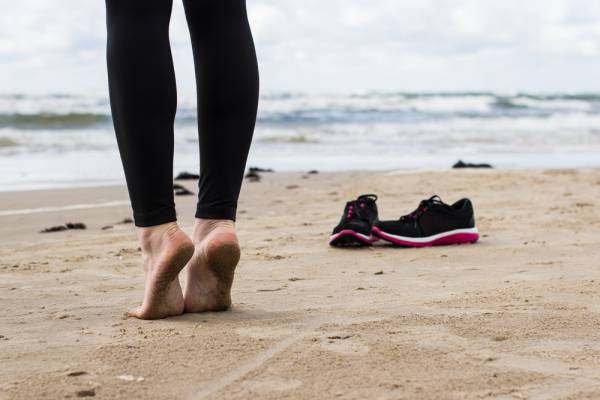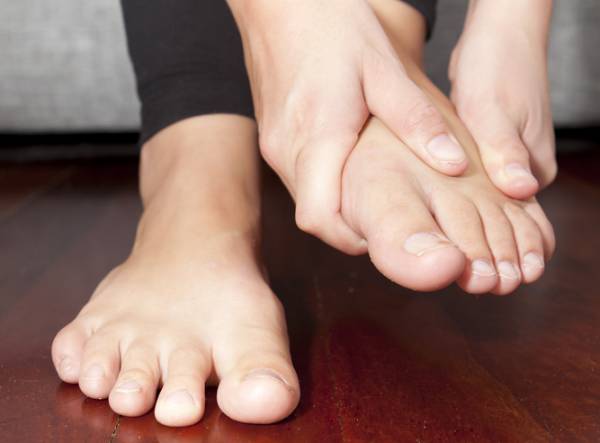Take a stand. Stand tall. Stand on your own two feet. Standing is often culturally referenced as a means of action and autonomy. It’s also something we, as humans, are specifically designed to do well.
While we usually learn to stand in the first year of life, the way we stand changes throughout our lifespan and is influenced by the way we are shaped and the activities we do. Our shoes, our height, our gender, and more may all influence how we interface with the floor.
RELATED: Take the Stand Up Challenge: 52 Ways to Get Up Off the Floor
At the root of all standing is our foundation: the feet. Like a plant, nourishing the foundation goes a long way in supporting our trunk and limbs. A few of the simple exercises and awareness cues below might just make a big difference.
Begin From the Bottom Up
In yoga, one of the first and best things we learn to do is to stand. It might seem ridiculous at first, seeing as we walked into class, but standing in an alignment that reduces the negative impact of gravity on the spine and joints is challenging. It involves unlearning many things we didn’t even know we’d learned.
“‘Lift your arches,’ you’ll hear, and it’s great advice but it’s not so easy to follow. If you’re used to shoes, they are used to doing the grunt work for you.”
It’s not as though we once set out to stand differently, it just slowly happens while we are busy living life. Learning a new habit in an hour of daily yoga practice takes time to have a trickle-down effect on the other 23 hours.
While the curves of the spine and the muscles that flex and extend the hips have a lot to do with how we stand, one of the first places we can transform our standing in yoga is at the foundation: our feet. The activation of the feet determines if the ankles roll in or out and that alignment tracks up to the knee and so on. So the feet might appear to play a small role in the overall picture, but once your shoes are off, much more is at stake.
RELATED: Causes and Treatment for Fallen Arches
“Lift your arches,” you’ll hear, and it’s great advice but it’s not so easy to follow. If you’re used to shoes, they are used to doing the grunt work for you. So when you’re asking the arches to lift after years of a shoe’s support, it can seem a lot like asking your hair to grow faster.
Just like anything you have to relearn, it is easier to do this big task if you break it into smaller tasks or things that are more tangible. There are a lot of different exercises you can do to train the arches to be more active on command and eventually on their own.

1. Toe Exercises
Stand with your feet a comfortable distance apart. Try to lift just the big toe on both feet, keeping the other toes down. Then try to do the exact opposite: lift all the toes but the big toes. Keep switching back and forth.
If this movement doesn’t come right away, don’t lose hope. It took a while for your feet to be the way they are and it might take a while to change them. As you get better at this, try it in different standing yoga poses and notice the effects. Most people who pronate, or roll to the inner arch, have a hard time lifting the big toes and most people who supinate, or roll on to the outer edges of the foot, have a hard time lifting the other toes.
RELATED: Understanding and Caring for Your Feet
Use this as a tool to train the feet but not a permanent solution. Be sure to set the toes down after practice and allow them to relax during your poses.
2. Leaning
Foot disengagement is often a product of weight distribution changes. Individuals who hyperextend the knee tend to stand in the heel. This leaves the front of the foot without a task and it will begin to weaken.
To work out of this habit, stand with your feet a comfortable distance apart and soften the knees. Then lean forward at the ankle like you are about to ski down a steep slope. Be sure not to lean at the hips or waist. Leaning at the ankle should bring lots of muscle activity to the toes, soles of the feet, and the core.
“Foot disengagement is often a product of weight distribution changes. Individuals who hyperextend the knee tend to stand in the heel.”
Practice leaning forward and slightly back while standing and then you can try it in symmetrical yoga poses like chair pose or standing forward bends.
3. Heel Raises and Imaginary Heel Raises
Slowly work out the feet with heel raises. On your inhale, raise the heels and on your exhale slowly lower them. It may feel easy at first, but slow it down and really feel the feet articulating against the floor as you move. Maybe close the eyes and try to time the movement perfectly with the breath.

Once you’ve got it, practice imaginary heel raises. These movements help to turn on the appropriate muscles without an actual lift of the heel. In any yoga standing pose, press down with the foot like you plan to lift the heel and then notice the difference in the leg activation.
RELATED: Dear Willow: How Do I Stretch and Strengthen My Feet?
4. Standing on a Soft Surface
If you have a hard time with balance or you are relatively flat-footed, keep practicing the exercises above on a firm surface. However, if your feet are getting stronger, then bump it up a notch by balancing on one foot on a padded surface, such as a folded blanket or pillow.
Be sure to keep the standing knee active and consider integrating all the previous tools. You can lean gently forward and back on the foot and incorporate imaginary heel raises. Between sides take a walk around and notice the difference between the two feet.
“[I]f your feet are getting stronger, then bump it up a notch by balancing on one foot on a padded surface, such as a folded blanket or pillow.”
5. Foot Rubs
It’s not exactly a yoga pose, but it’s a great idea for falling or stiff feet. At the end of the day give your feet some love. Massage the soles of your feet and stretch the toes. It feels good and it’s a great way to stay in touch with what keeps you in touch with the earth.

Follow Through
Start with one or two of the exercises and see how it goes. When you do a lot of squats, the thighs begin to burn. When you do a lot of standing with active arches, the feet will too. This is especially common if you are used to arch support or if you have flat feet.
When you feel a burning in the feet during standing asanas, shorten your stance. If that doesn’t work, take a break. Your foot musculature is just like any other and it takes time to tone and change it.
RELATED: 4 Common Foot Injuries in the Athlete
If your soles are so sore you feel you can’t walk the next day, do less activation. If you feel a twinge in the inner or outer knee joint, do less. Pay attention to the subtle changes that occur in your poses as you do these exercises. In fact, as you enroll the arches in your standing poses, you should find that you get more out of the postures with less time spent in them.
In sum, it might get a little easier to stand on your own two feet.
Photos courtesy of Shutterstock.






